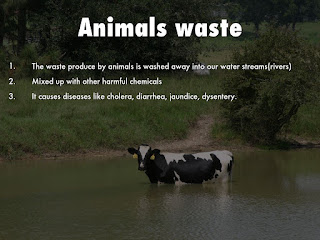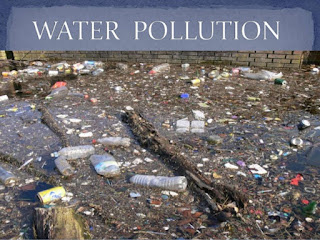Air And Water Pollution: Impact Of Animal Farming on The Environment
Environmental impact of animal production: "Each one of us has an impact on the environment and the world in which we live. Growing food and raising animals also uses resources from the earth. Humans impact the environment through deforestation, agricultural and livestock activities, urbanization and burning fossil fuels.
Each and every living creature produces greenhouse gases (GHG). Greenhouse gases are gases in the earth’s atmosphere and can be produced in nature and through human industry. An increased amount of GHG generates high temperatures on earth. The most abundant GHG are water vapor, carbon dioxide, methane, nitrous oxide and ozone. The amount of GHG that agriculture and farming produces around the world is different. This is because each livestock production system is different in the way it uses resources. Agricultural systems are often categorized into two types of systems: extensive farming and intensive farming.
Extensive farming is a type of agriculture that is mainly a pasture-based and land-based system. In beef cattle production, for example, cattle in an extensive system would graze in a pasture. Intensive systems have more concentrated operations and are often more mechanized. A feedlot is an example of an intensive system for beef cattle production. Each of these systems occurs all around the world and each has an environmental impact. The challenge for global livestock production is to improve environmental sustainability within each region rather than prescribing a one-size-fits-all global system. Currently in the United States, agriculture accounts for seven percent of the total GHG emitted.
Carbon dioxide from livestock production is a result of fuel use from equipment and changes in the carbon content of soil, such as, crops, deforestation and direct land use by animals. Livestock production is the largest methane source emitter in the world and the third largest in the United States. Most of this methane is a result of manure storage and enteric fermentation, which is methane produced in the digestive tract of an animal. Also, the source of nitrous oxide in livestock production is the application of manure and artificial fertilizers on fields and from ammonia losses during and after the growing season.
Farmers are now using a process called Precision Feed Management which allows the farmer to feed his animals a more precise amount of nutrients so there is greater feed use and less waste in the form of uneaten food and animal manure. When animals are better able to use the food they eat, fewer nutrients are released into the environment.
How do animals contribute to water pollution?
Water is a scarce and valuable resource essential to human and animal life. The consumption of animal products contributes to more than one-quarter of the water footprint of humanity. Water for livestock production is used for drinking, irrigation to grow crops/ pasture and for different animal services such as cleaning. The water needed to produce feed is the major factor behind the water footprint of animal products.
Animals can negatively affect water quality by having free access to water sources where they are able to deposit waste and cause the water to become cloudy from stirring up mud. Waste from animals can be dangerous because it carries harmful bacteria which people may drink. Globally, 3.2 percent of human deaths are caused by unsafe water. This problem is especially prevalent in developing countries. However, only a small portion of these deaths are related to bacteria from livestock.
Water contamination can occur in many different ways. In extensive systems, livestock often have access to bodies of water where they are able to deposit waste. This waste travels downstream and has direct contact with humans. In intensive production systems, bacteria can enter water sources during heavy rainfalls that might result in an overflow of the manure catchment basin or from manure that has been put on fields as fertilizer. The presence of bacteria in water can also result from urban wastewater, sewage, septic tank discharge and waste from wildlife."
'via Blog this'






Comments
Post a Comment